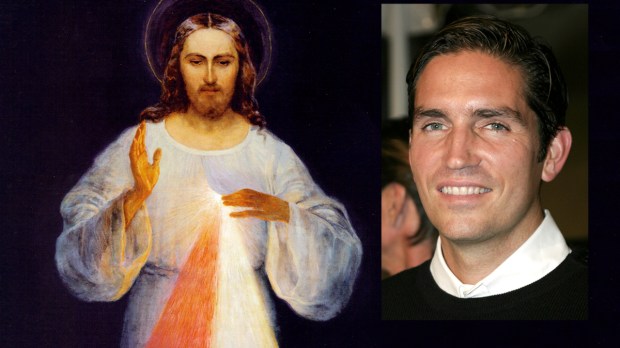Shortly after Pope Francis announced a Year of Mercy running from December 8 of 2015 to November 20 of 2016, he released “Misericordiae Vultus” (“The Face of Mercy”), a papal bull proclaiming the extraordinary jubilee. The document opens with a succinct but bold declaration: “Jesus Christ is the face of the Father’s mercy.”
Mercy has been a central theme throughout Francis’ pontificate. But it’s also part of a much longer and older story, one that goes back almost a century to a Polish nun whose private spiritual experiences changed the world.
That story – the story of the Divine Mercy – is the subject of The Face of Mercy,an excellent new documentary produced by the Knights of Columbus. Narrated by Jim Caviezel, the documentary opens with a clip of Francis discussing the groundbreaking contribution of one of his predecessors on the subject of mercy. “John Paul II had the first intuition of this, when he began with Faustina Kowalska, the Divine Mercy,” Francis explains. “He had something, he had intuited that this was a need in our time.”
The first segment then dives into the pontificate of Saint John Paul II and the great role the Divine Mercy played in his life. From his public forgiveness of his would-be assassin, to his canonization of Faustina Kowalska and establishment of “Divine Mercy Sunday,” right up to his death on the vigil of the same feast day five years later, John Paul II was profoundly connected to the Divine Mercy, which he saw as “the heart of the gospel, and a roadmap to the future.”
We then move back in time into the life of the Polish nun who so inspired John Paul II. Elegant footage of landmarks and art associated with Kowalska’s visions and writings, spliced with interviews with cardinals, nuns, journalists, and others, paint a portrait of an unassuming, unremarkable woman whose visions of Christ were initially received by her superior and by the Church with great skepticism. But her experiences stood up to scrutiny, and over time, began to leave their mark on Poland, the Church, and the whole world.
The Face of Mercy doesn’t just tell us this; it shows us. We’re drawn into six vignettes, each showing the profound impact the Divine Mercy has had on an individual life. We meet Immaculée Ilibagiza, a survivor of the Rwandan genocide, who forgave her family’s killers; Eric Mahl and Frater Matthew Desme, two former professional athletes who gave up promising careers to become conduits for God’s mercy; Jennifer Trapuzzano, whose husband was shot and killed three weeks before their daughter was born, but who forgave his killer at the sentencing; and Fr. Donald Calloway, who spent his younger years running drugs for the Japanese mafia and was later transformed by the welcoming gaze of the Divine Mercy image.
But as beautiful and moving as these five testimonies are, the vignette on Det. Steven A. McDonald, who just passed away last month, stands out:
McDonald, an NYPD officer, was shot by a teenager in Central Park in 1986 and paralyzed from the neck down. Inspired by his faith and the healing power of mercy, he forgave his shooter. “If I chose not to forgive Shavod,” McDonald says, “I don’t think I would be alive. I think all the negative emotions would’ve overtaken me. God made us, he loves us. There’s a purpose and a plan to our being here, and that plan is a plan of love. And a beautiful expression of love is forgiveness. And that’s what I was able to do. I know the world is in a bad way right now, and we need God’s love, forgiveness. And I believe that St. Faustina and Pope John Paul, they understood that it had to be the Divine Mercy.”
McDonald’s words are worth pondering. For John Paul II, the Divine Mercy was not just a private ideal for us to aspire to in our own lives, but a worldwide message with great social and historical significance. At the canonization mass for St. Faustina in 2000, he reflected on the both the genocidal horrors of the 20th century and the uncertainty of humanity’s future.
“Jesus told Sr Faustina: ‘Humanity will not find peace until it turns trustfully to divine mercy’ (Diary, p. 132)…What will the years ahead bring us?” he wondered. “What will man’s future on earth be like? We are not given to know. However, it is certain that in addition to new progress there will unfortunately be no lack of painful experiences. But the light of divine mercy, which the Lord in a way wished to return to the world through Sr Faustina’s charism, will illumine the way for the men and women of the third millennium.”

